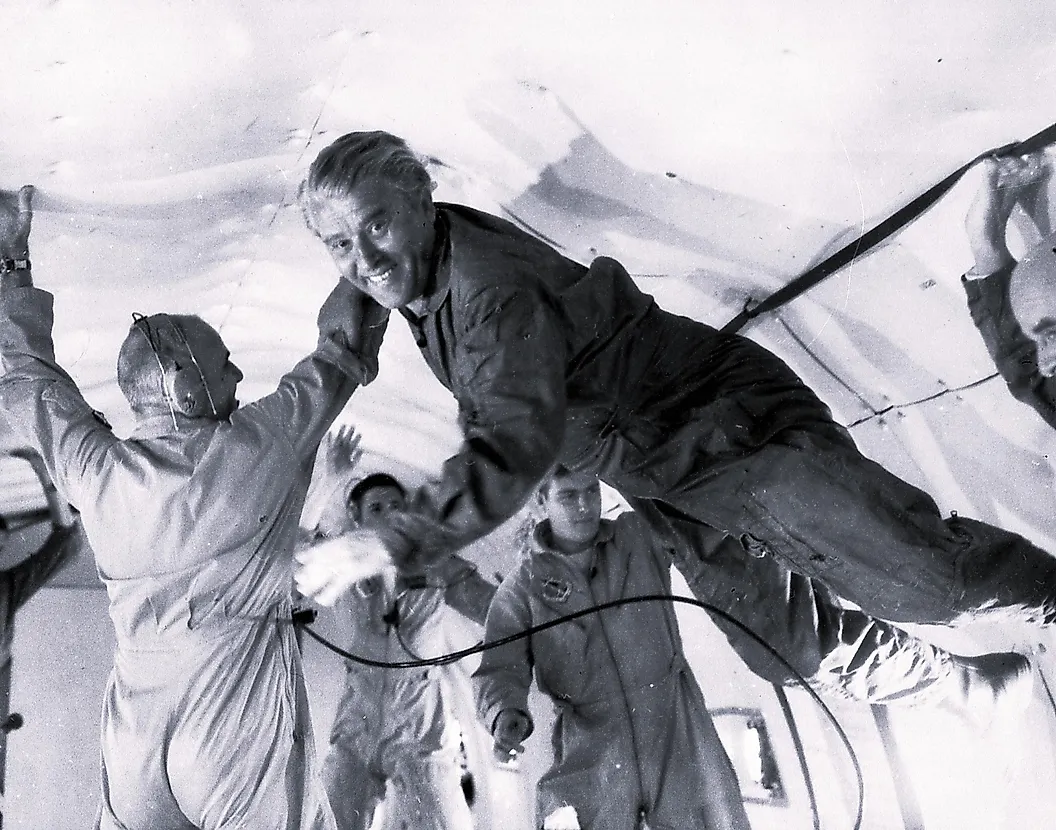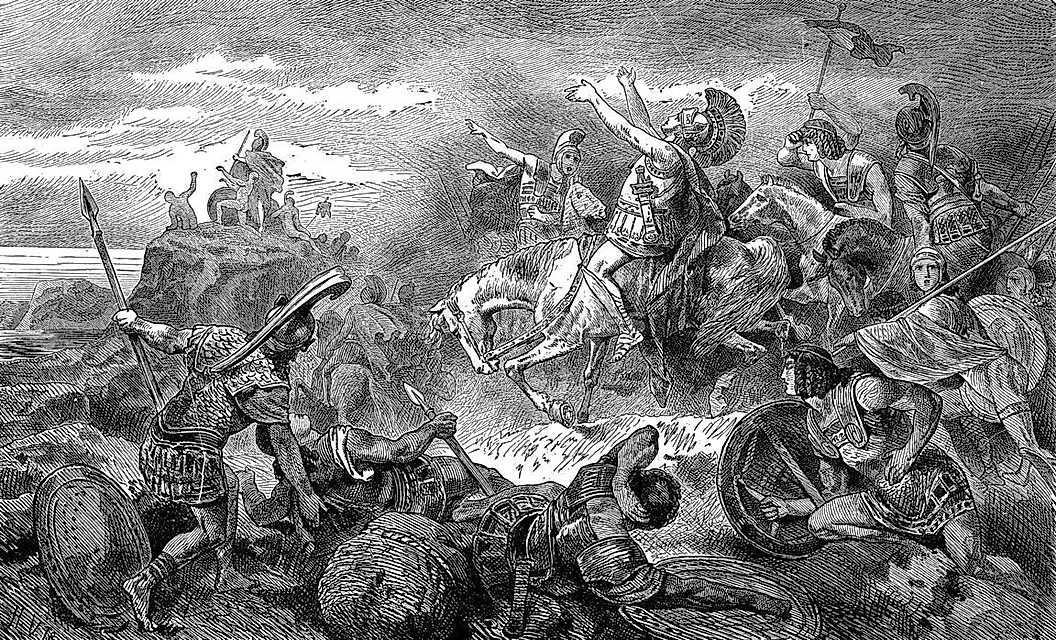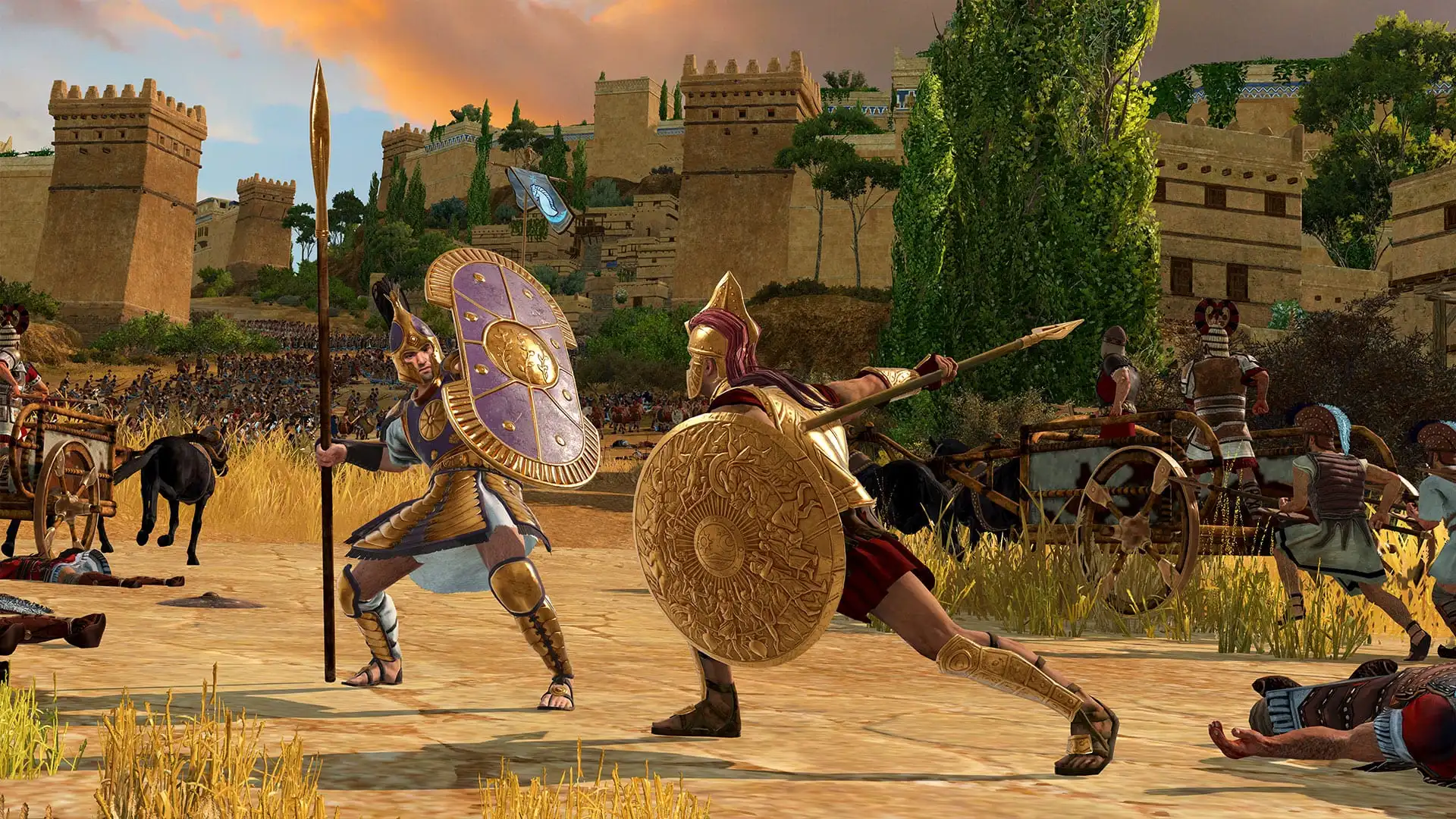Causes of the Battle
Prelude to War: Hitler’s Ambitions

The Causes of the Battle, also known as Prelude to War: Hitler’s Ambitions, refer to a series of events and circumstances that led to the outbreak of war on the Eastern Front during World War II, culminating in the Battle of Stalingrad.
The primary cause of the Battle was Adolf Hitler’s aggressive expansionist policies in Europe. Following Germany’s remilitarization of the Rhineland in 1936 and the annexation of Austria in 1938 (Anschluss), Hitler set his sights on Eastern Europe, where he sought to establish a vast empire.
Hitler’s ambitions were driven by several factors. Firstly, he believed that Germany required Lebensraum (living space) to accommodate its growing population and economic needs. Secondly, he saw the Soviet Union as a threat to German interests and a potential rival for dominance in Europe.
The Nazi regime had long been critical of the Treaty of Versailles, which imposed harsh penalties on Germany following World War I. Hitler sought to undo these restrictions and reassert Germany’s position as a major world power.
Furthermore, Hitler was motivated by ideological considerations, particularly his anti-communist and anti-Semitic views. He saw the Soviet Union as a bastion of communism and a potential threat to European stability, while Jews were scapegoated for Germany’s problems.
Hitler’s plans for Eastern Europe were outlined in the Molotov-Ribbentrop Pact, signed on August 23, 1939. This secret agreement with Soviet leader Joseph Stalin divided Poland between Nazi Germany and the Soviet Union, paving the way for a joint invasion of Poland.
The German-Soviet Pact effectively neutralized potential opposition from Western powers, as Hitler believed that he had secured his eastern flank while simultaneously binding the Soviet Union to non-aggression.
However, this strategic maneuver proved shortsighted. Germany’s invasion of Poland on September 1, 1939, marked the beginning of World War II in Europe. The German and Soviet armies subsequently clashed over territories in Eastern Europe, culminating in the Battle of Stalingrad in August 1942.
The battle, which lasted from August 1942 to February 1943, was a pivotal turning point on the Eastern Front. The German army’s defeat marked a significant reversal for Hitler and the Nazi regime, marking the beginning of the end of their aggressive expansionist policies and paving the way for the Allied victory in Europe.
The German army’s invasion of the Soviet Union in June 1941 marked a significant escalation of World War II, with Stalingrad being one of the key battlegrounds (Glantz, 2001). As part of Operation Barbarossa, German forces aimed to capture Moscow and ultimately destroy the Red Army, leading to a prolonged and brutal conflict.
The German army’s invasion of the Soviet Union in June 1941 marked a significant escalation of World War II, with The Battle of Stalingrad being one of the key battlegrounds (Glantz, 2001). This pivotal conflict was part of Operation Barbarossa, a German military strategy aimed at capturing Moscow and ultimately destroying the Red Army.
The causes of this invasion were multifaceted, rooted in Germany’s desire for Lebensraum, or “living space,” which was seen as essential to the country’s economic survival (Mazower, 1998). Germany believed that it needed to expand its territory eastward to secure resources and establish a buffer zone against potential threats.
The German military also sought to take advantage of the Soviet Union’s weakened state following the Russian Civil War. The Red Army had suffered heavy losses, and the country was plagued by economic troubles, making it an attractive target for invasion (Service, 1996).
Additionally, Germany hoped to knock the Soviet Union out of the war quickly, thereby preventing it from becoming a major power and allowing Germany to focus on its European adversaries. However, this would prove to be a grave miscalculation, as the Soviet Union would ultimately emerge victorious at Stalingrad and go on to play a crucial role in the Allied victory (Erickson, 1993).
The German invasion of the Soviet Union also had significant implications for the war’s progression. The conflict led to massive losses on both sides, with estimates suggesting that over a million soldiers were killed or wounded during the battle (Glantz & House, 2004). The prolonged and brutal nature of the fighting took a heavy toll on civilians, with many cities reduced to rubble and hundreds of thousands of people displaced.
In conclusion, the Battle of Stalingrad was a pivotal moment in World War II, marked by Germany’s invasion of the Soviet Union and the subsequent brutal conflict. The causes of this invasion were rooted in Germany’s desire for resources, security, and power, and would ultimately prove to be a turning point in the war.
Economic Importance of Stalingrad
The Battle of Stalingrad was a pivotal turning point on the Eastern Front during World War II, fought between Nazi Germany and the Soviet Union from August 1942 to February 1943. The causes of this battle can be attributed to several key factors.
Firstly, the German army’s drive towards Moscow had been halted in December 1941, leading Adolf Hitler to redirect his forces towards the Caucasus region in an attempt to capture its rich oil reserves and secure a vital source of fuel for the war effort. The Soviet Union, aware of this plan, chose to contest the German advance along the Volga River and particularly at Stalingrad, a strategic city located on the west bank of the river.
The economic importance of Stalingrad was immense. Situated in the southern part of Russia, it controlled access to the Caucasus region’s oil fields and had a strategic location that allowed it to serve as a pivotal point for trade between Europe and Asia. Moreover, the city itself was an important industrial center, manufacturing machinery, ammunition, and other critical war materials.
The capture of Stalingrad would have granted the Germans control over the Volga River and access to the Caspian Sea, which would have allowed them to transport oil from the Caucasus region to Germany, thus securing a vital supply line for their military operations. This would not only have given them a significant advantage on the battlefield but also would have compromised the Soviet Union’s ability to resist further German advances.
In summary, the battle was sparked by Germany’s desire to secure oil supplies from the Caucasus region and its strategic location along the Volga River, making it a crucial point of contention between Nazi Germany and the Soviet Union during World War II.
Stalingrad held immense strategic value due to its location on the Volga River, which provided access to crucial industrial resources (US Library of Congress, 1944). The city’s steel mills and factories played a pivotal role in supporting the Soviet war effort, with German forces seeking to seize control of this vital infrastructure.

The causes of the Battle of Stalingrad can be attributed to a complex array of historical and strategic factors that converged during World War II. One of the primary reasons was the city’s location on the Volga River, which provided access to crucial industrial resources.
According to the US Library of Congress (1944), the Volga River served as a vital transportation route for the Soviet war effort, connecting the city to other key industrial centers and supply depots. The river also played a significant role in the city’s economy, supporting agriculture and commerce throughout the region.
The city’s steel mills and factories were of particular importance, playing a pivotal role in supporting the Soviet war effort. These manufacturing facilities produced critical materials such as steel, which was essential for the production of military equipment and supplies.
German forces recognized the strategic value of Stalingrad and sought to seize control of this vital infrastructure. The city’s location made it an ideal target, providing a stepping stone for further advances into the Soviet Union.
The Germans also hoped to capture Stalingrad as part of their larger strategy to divide the Soviet Union and ultimately defeat the Russian people. By controlling the Volga River and surrounding cities, German forces aimed to cripple the Soviet war effort and gain a strategic advantage on the Eastern Front.
Course and Aftermath of the Battle
Russians Refuse to Give Up: The Turning Point
The Battle of Stalingrad was a pivotal and bloody conflict that took place during World War II, marking a significant turning point on the Eastern Front. It was fought between the German Sixth Army and the Soviet Red Army from August 1942 to February 1943.
The course of the battle saw intense urban warfare as both sides clashed in the city of Stalingrad (now known as Volgograd), with the Germans seeking to capture the city’s strategic industrial and economic centers. Meanwhile, the Soviets launched a massive counterattack that encircled the German army, trapping over 300,000 soldiers.
The aftermath of the battle was brutal and devastating for both sides. The Soviet Union suffered heavy losses, estimated at over a million casualties, while the German Sixth Army was almost entirely destroyed, with only a handful of soldiers managing to escape the encirclement.
Despite these catastrophic losses, the Russians refused to give up, buoyed by their strategic victory and the loss of momentum for the Nazi war machine. The Battle of Stalingrad marked a significant turning point in World War II, as it halted the German advance on the Eastern Front and set the stage for the ultimate defeat of Nazi Germany.
On February 2, 1943, General Friedrich Paulus, commander of the German Sixth Army, was ordered to surrender by Hitler, who had initially refused to let him do so. However, Paulus chose not to comply with this order and instead remained in Stalingrad, where he and his men were eventually forced to capitulate on February 2, marking a humiliating defeat for the Nazi regime.
The legacy of the Battle of Stalingrad continues to be felt today, serving as a testament to the bravery and resilience of the Soviet people during one of the most trying periods in modern history. It remains an important reminder of the devastating consequences of war and the importance of diplomacy and international cooperation in preventing such conflicts from arising in the future.
In November 1942, the German army launched an assault on Stalingrad, expecting a swift victory (Mazalov & Mazalov, 2016). However, Soviet forces held their ground, and by January 1943, they had encircled the German Sixth Army, leading to one of the most decisive battles in history.
The course of the battle was marked by a series of brutal and intense fights, with both sides suffering heavy casualties. The Soviet forces, led by General Georgy Zhukov, employed a defensive strategy, digging in and fortifying their positions around the city, while also conducting a series of counterattacks to weaken the German army.
Meanwhile, the German Sixth Army, led by General Friedrich Paulus, was bogged down in the city’s rubble-strewn streets, struggling to break through the Soviet defenses. Despite being outnumbered and outgunned, the Germans continued to pour troops into the city, hoping to capture its strategic port on the Volga River.
However, the Soviet forces had prepared a surprise trap for the German army. Under the guise of withdrawing from the city, they retreated behind the lines and then launched a massive counterattack, trapping the German Sixth Army in a vast encircling movement.
The aftermath of the battle was brutal. The trapped German troops were subjected to weeks of intense Soviet artillery bombardment, followed by house-to-house fighting as the Soviets sought to root out any remaining pockets of resistance. On February 2, 1943, General Paulus surrendered his forces, marking the first time in history that a major army had been defeated on its own soil.
The Battle of Stalingrad was a crushing blow to Nazi Germany, with estimates suggesting that up to 400,000 German troops were killed or captured. The Soviet Union suffered significant losses as well, but they were able to hold their ground and ultimately emerge victorious.
Strategically, the battle marked a turning point on the Eastern Front, shifting momentum in favor of the Soviets and marking a decisive defeat for Nazi Germany. The loss at Stalingrad weakened German forces to such an extent that it took months to recover from the blow, allowing the Soviet Union to launch further offensives and drive the Germans back.
In the end, the Battle of Stalingrad proved to be one of the most significant battles in history, a testament to the bravery and resilience of the Soviet people. It was a turning point in World War II, marking a shift from German military dominance to the eventual Soviet victory that would bring about the war’s end.
The Road to Victory: Demise of the German Sixth Army
The Battle of Stalingrad was a pivotal turning point on the Eastern Front during World War II, marking a decisive defeat for Nazi Germany’s Sixth Army and setting the stage for the eventual Soviet victory.
At its peak, the German Sixth Army under the command of General Friedrich Paulus was one of the largest and most elite forces in the German military, consisting of approximately 300,000 troops, with an additional 100,000 supporting personnel, including artillery units, engineers, and logistics teams.
The Soviet Red Army, led by the Stalingrad Front’s Commander-in-Chief, General Georgy Zhukov, had been conducting a series of strategic maneuvers in anticipation of the German attack. By late August 1942, the Soviet defenses were firmly established around the city of Stalingrad (now known as Volgograd), which was strategically located on the west bank of the Volga River.
On November 19, 1942, a massive Soviet counterattack, Operation Uranus, aimed to encircle and destroy the German Sixth Army. The operation involved a series of coordinated attacks by Soviet forces along the north, south, and east flanks of the German army’s front lines.
The Soviet troops swiftly advanced on the west flank, pushing forward into the vast steppes surrounding Stalingrad. This rapid expansion of the Soviet lines caught the German Sixth Army off guard, with their supply lines stretched to breaking point.
Over the next several days, the Soviet Red Army continued its relentless drive, cutting through German defenses and advancing toward Stalingrad at a rate that was previously unimaginable. The encirclement of the city tightened dramatically as Soviet troops effectively sealed off all escape routes from the area, leaving no way for German forces to retreat.
By December 23, 1942, the German Sixth Army found itself trapped in an ever-narrowing pocket, with Soviet forces closing in on all sides. Fierce battles raged on, but with supply lines severed and ammunition dwindling, the German troops were left fighting a desperate rearguard action.
The encirclement was finally complete on January 31, 1943, when Soviet forces successfully sealed off the last escape route from Stalingrad, leaving over 300,000 German soldiers trapped within the city or in surrounding areas. The stage had been set for what would be one of the most dramatic and decisive battles in human history.
The Battle of Stalingrad marked a turning point on the Eastern Front, marking the beginning of a Soviet advance that would eventually push German forces back across Ukraine, Belarus, and Poland. It was also a major defeat for the Nazi regime, which never fully recovered from this massive blow to its military strength and morale.
The Demise of the German Sixth Army at Stalingrad marked a pivotal moment in history, as it set in motion events that would ultimately contribute to the collapse of Hitler’s Third Reich and bring an end to World War II.
The trapped German forces, led by General Friedrich Paulus, refused orders from Hitler to break out or surrender (Nord, 2017). By February 1943, the remnants of the German army had surrendered or been killed, marking a crushing defeat for the Axis powers and a significant turning point on the Eastern Front.
The Battle of Stalingrad was a pivotal moment in World War II, marking one of the largest and bloodiest battles in history. The course of the battle saw the German Sixth Army, led by General Friedrich Paulus, trapped in the city of Stalingrad, surrounded by Soviet forces.
The German forces were encircled on all sides, with no clear path for escape or retreat. Hitler had ordered Paulus to break out and attempt a rescue, but the general chose instead to follow orders from the high command to hold his ground and await relief that never arrived.
As the Soviet forces tightened their grip around the city, the situation grew increasingly dire for the German army. With no resupply lines or escape routes, the soldiers were forced to fight in desperate circumstances, with many dying of hunger, cold, and disease as much as from combat injuries.
The battle’s aftermath was a crushing defeat for the Axis powers, marking a significant turning point on the Eastern Front. By February 1943, the remnants of the German army had surrendered or been killed, with estimates suggesting that over 300,000 soldiers lost their lives in the battle.
The consequences of the battle were far-reaching and profound. The defeat at Stalingrad marked a major turning point in the war on the Eastern Front, as the Soviet Union gained momentum and eventually pushed the German army back into Germany. It also dealt a significant blow to Hitler’s regime, leading to increased infighting within the Nazi leadership and weakening his grip on power.
The Battle of Stalingrad remains one of the most studied battles in military history, with many historians regarding it as a symbol of the futility of war and the importance of strategic planning. The bravery and sacrifice of the soldiers involved are still remembered today, and the battle’s legacy continues to be felt in modern times.
- Austin, Texas - September 4, 2024
- Country Flags With Stars - September 4, 2024
- 7 Oldest Cities In The United States - September 4, 2024


